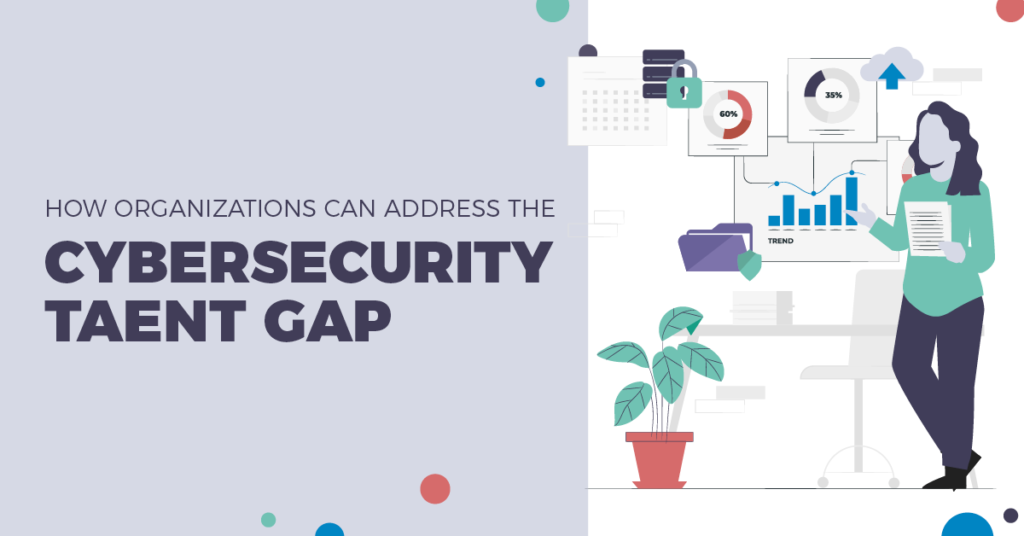Cybercrime has become even more prevalent with organizations continuing to shift to more digital-based operations. Statistics from TechJury’s write-up on cybersecurity state that the global cost of these attacks will amount to $10.5 trillion by 2025, with its average cost being valued at $4.24 million. Misconfiguration, human error, and poor maintenance are just a few of the reasons why it has become easier for these criminals to access sensitive information. This makes cybersecurity professionals more important now than ever before.
In fact, a post by Maryville University on the cybersecurity shortage notes the demand for cybersecurity employees is predicted to rise to 6 million, but as of 2019, the lack of professionals to fill the gap amounts to around 1.5 million — and likely more now. Without enough of these professionals, businesses are set to lose $8 trillion within the next five years. Five billion personal records are also estimated to be breached within the next three years.
Since finding the right candidate during this shortage is difficult, one way companies can address this issue is by building on the skills their employees already have. This not only solves the current talent gap, but also ensures that even non-cyber personnel can hold their own — even without the direct help of a cybersecurity specialist.
Here is how companies can address the current talent shortage through skill development:
Assess team capabilities
It is important to understand where each employee is at when it comes to the current level of knowledge and skills they possess. Our diagnostic-first approach highlights the importance of gathering data first. This provides baseline information that companies can use to provide training suitable for their team(s). Organizations can also make use of a gap analysis to assess whether or not learning goals are met, as well as find which employees need a little more help. Through data-driven training, companies can quantify the capabilities of their staff and understand how to better provide them with the necessary skills to handle cybersecurity threats.
Have role-based training
When relying on employees to take on additional cybersecurity responsibilities, it is important that everyone is on the same page. Having role-based training related to cybersecurity will allow them to have the same up-to-date knowledge, as needed by their position. Our past article on ‘Cybersecurity Role-Based vs Certification Training’ highlights that the former can serve as a hands-on program that helps employees solve real-life scenarios and understand how to address cyber threats that come with their role within the company. As such, employees are more capable of applying what they’ve learned to practice. While this program is more geared towards professionals within the cybersecurity industry, having a less technical yet informative training can be the key to training personnel against relevant attacks and vulnerabilities.
Our IT Security Essentials Training Course is a perfect example of a curriculum that organizations can utilize as it teaches basic skills such as the fundamentals of cybersecurity, tips to combat ransomware, and other best practices in a customizable way that everyone can use to keep company data safe. This course is ideal for those who already have a background understanding of cybersecurity practices. When done alongside basic training, employees will be able to gain essential knowledge that they can apply within their roles in a company.
Encourage upskilling
Aside from simply offering training programs, it is also great to encourage employees to learn the principles of cybersecurity on their own. A study by researchers from Jain University explains that in today’s digital world, the professional landscape will continue to change dramatically. Consequently, the need for upskilling and reskilling has risen by 70%, with ICT and digital technology capabilities at the forefront of importance.
Encouraging employees to upskill in their own time – whether it’s through showing them which training programs they can take, or which seminars are best for their capabilities – can create a culture of initiative. This will lighten the load for organizations in terms of addressing the current cybersecurity skill gap, as well as create a more sustainable approach to cybersecurity defense.
Even though cybersecurity may not be every employee’s forte, everyone can benefit from a better cybersecurity understanding. When leaders invest in the skills of their existing teams, regardless of department, the entire organization stands to gain from holistic safety and security.
Article written by Rae Juno and exclusively submitted to cybervista.net


